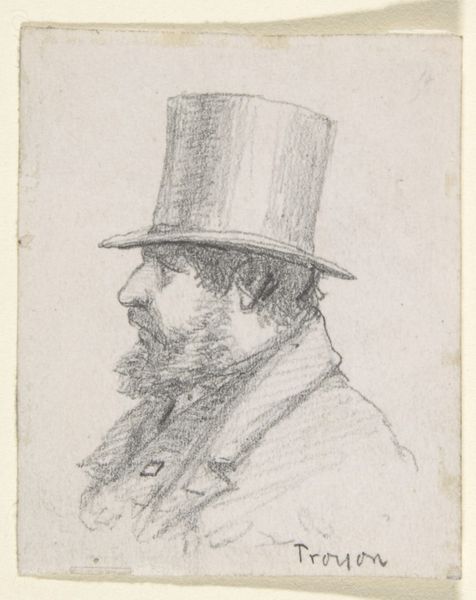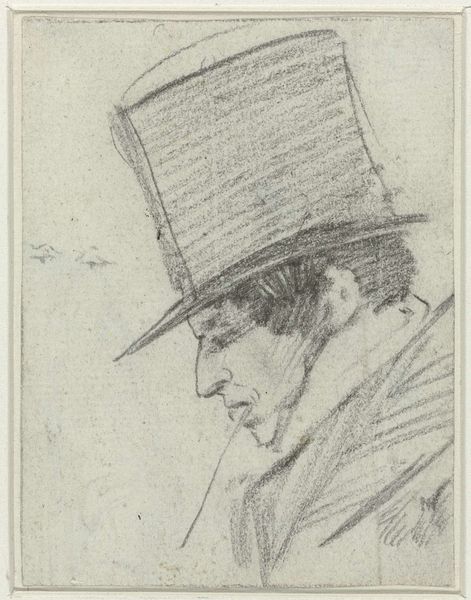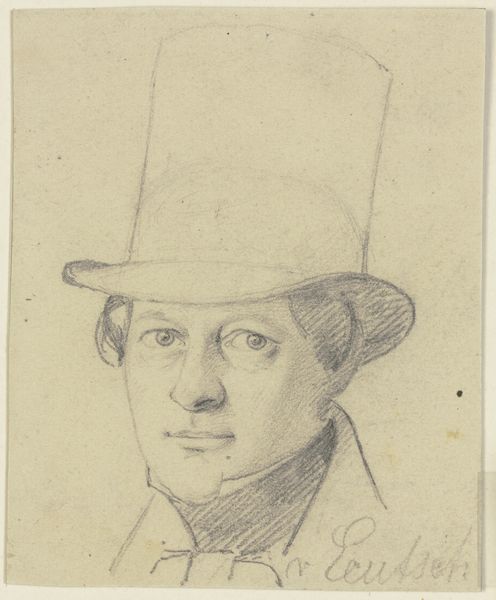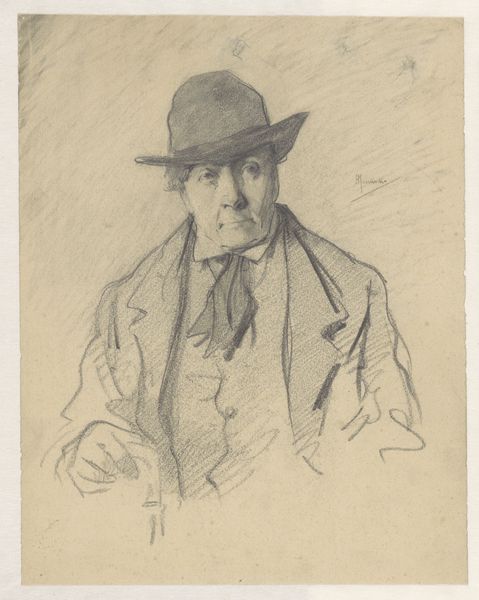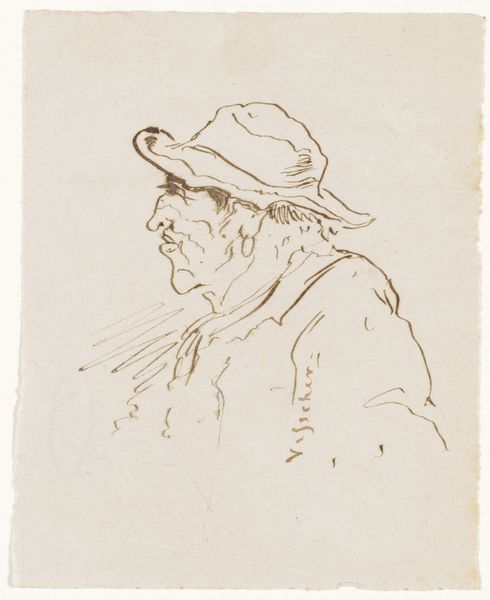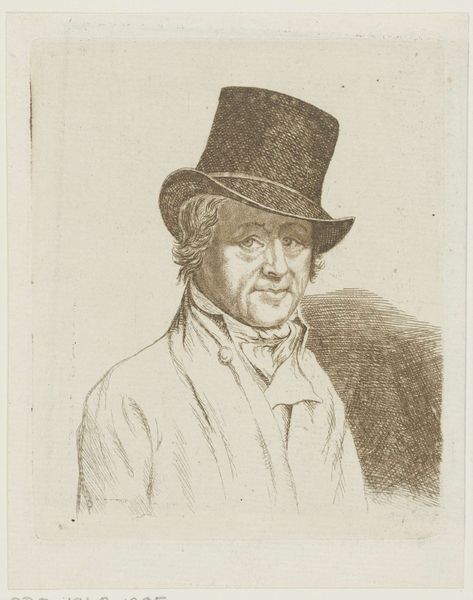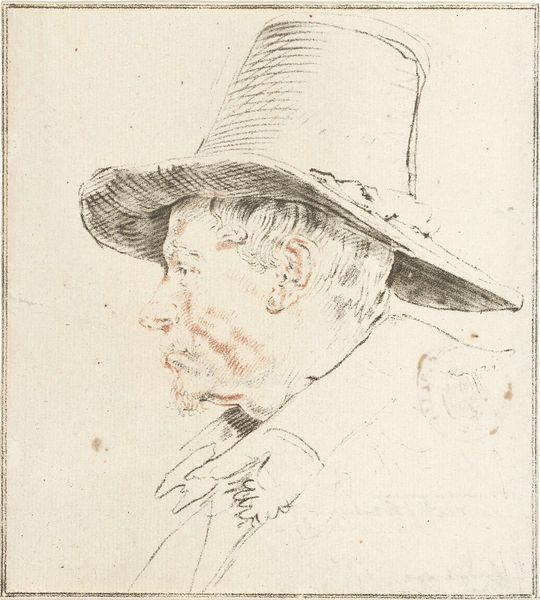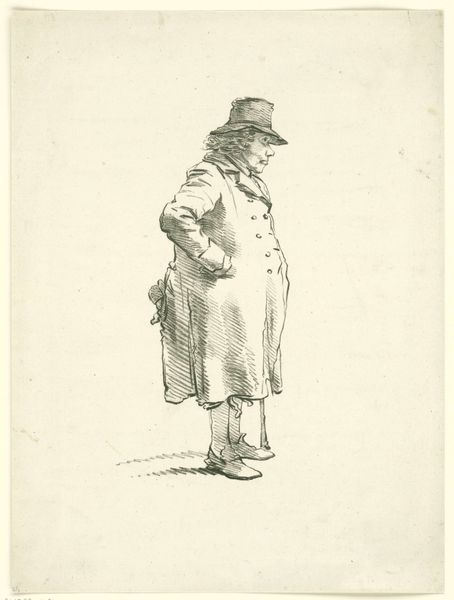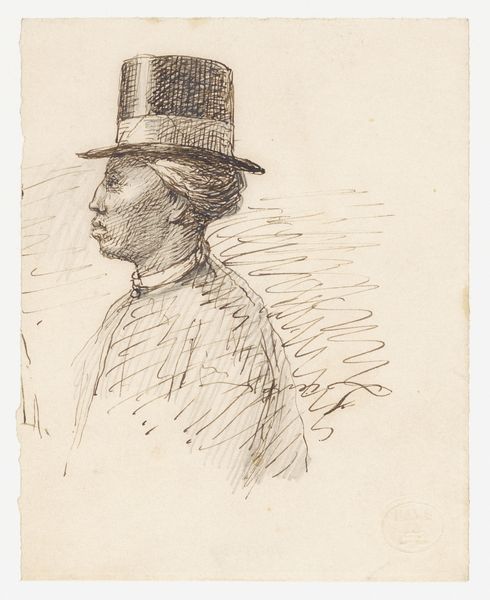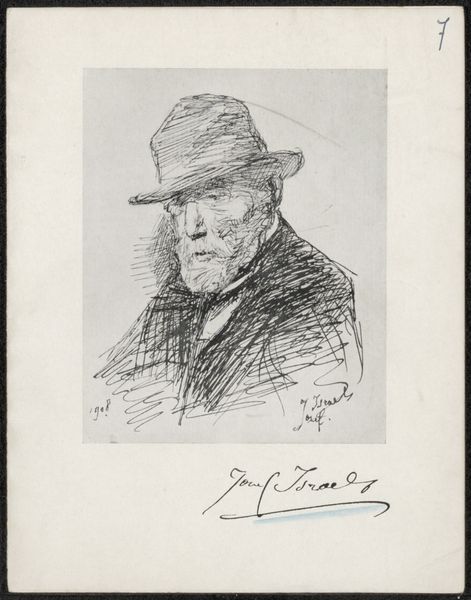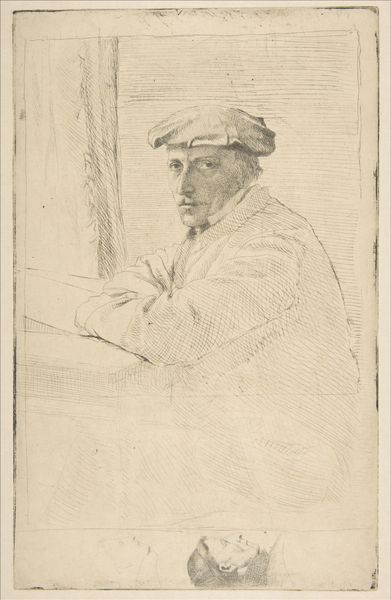
#
pencil drawn
#
amateur sketch
#
light pencil work
# print
#
pencil sketch
#
charcoal drawing
#
portrait reference
#
idea generation sketch
#
pencil drawing
#
portrait drawing
#
pencil work
Dimensions: plate: 16.5 × 13 cm (6 1/2 × 5 1/8 in.) sheet: 34.7 × 22 cm (13 11/16 × 8 11/16 in.)
Copyright: National Gallery of Art: CC0 1.0
Editor: This is "Selbstbildnis," a self-portrait by Hans Meid from 1917, rendered as a print. There's a starkness to it; the lines are so precise yet convey a somewhat melancholic feeling. What do you see in this piece, especially from a formalist perspective? Curator: Initially, the interplay of line and tone commands attention. Note the economy of means. Meid achieves remarkable volume and depth using what appears to be a drypoint technique, perhaps even etching. Observe the cross-hatching, particularly in the shadowed areas beneath the hat and around the eyes. Editor: It's interesting how the hat casts such deep shadows. Is that a conscious effort to conceal, or just a stylistic choice? Curator: Consider how the hat's brim bisects the face, creating a division between light and shadow. This division isn’t merely representational, but also functions as a structural element, enhancing the geometry of the composition. This strategic obscuration invites speculation. What does it mean to partially conceal oneself within a self-portrait? What statements might be suggested via line? Editor: So, beyond just the literal depiction, it's about how the artist uses light and shadow to guide the viewer's eye and create a certain mood. I never would have thought to examine it that closely. Curator: Exactly. Consider how the use of line and shading contributes to the overall expressive quality. The texture, created solely with line variation and density, provides a visceral experience separate from mere representation. By analyzing the artist’s choice of medium and handling of line, we can deconstruct meaning. Editor: That gives me a lot to think about, thank you. Looking at it now, it is not just an image but a construction of lines, shapes, and shadows which work together. Curator: Precisely. Art is a complex equation of form, intent, and, most importantly, reception.
Comments
No comments
Be the first to comment and join the conversation on the ultimate creative platform.
